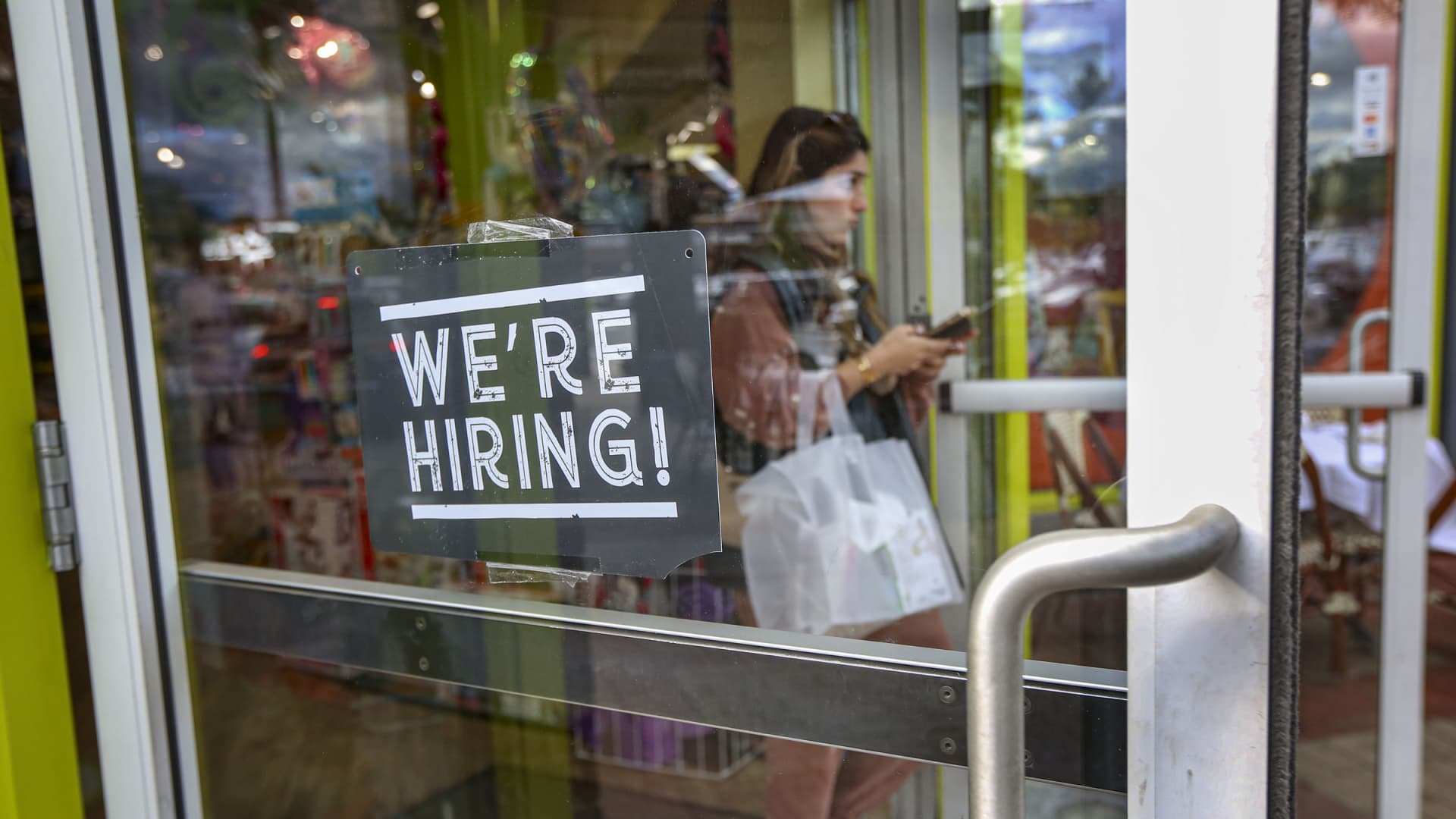
A “We are Hiring” signal hangs at the entrance door of a toy retailer in Greenvale, New York, on Sept. 30, 2021.
John Paraskevas/Newsday RM by the use of Getty Photographs
State cuts to pandemic unemployment advantages closing summer season had a small have an effect on on hiring, suggesting enhanced investment for the unemployed did not play a large function in hard work shortages, in step with analysis.
The government very much expanded the social protection internet for the jobless in March 2020. It introduced masses of greenbacks in more weekly advantages to folks and gave support to tens of millions of prior to now ineligible other folks, like gig employees and the self-employed.
Governors of kind of part the states, maximum of them Republican, withdrew federal advantages in June or July 2021 — a couple of months ahead of their scheduled expiration national on Sept. 6.
There used to be a debate as to how a lot the improved unemployment advantages have been contributing to hiring demanding situations employers appeared to be having.
Some officers believed federal help saved other folks from searching for paintings; others concept elements like ongoing pandemic well being dangers and circle of relatives care tasks (youngsters house from faculty, for instance) performed a larger function.
An research by means of researchers on the Federal Reserve Financial institution of San Francisco discovered states that withdrew advantages early most probably did not enjoy the supposed impact of spurring jobs. It when compared hiring charges from July to September 2021 within the states that ended advantages relative to those who saved them intact.
Hiring picked up by means of 0.2 share issues within the “cutoff” states relative to those who saved the federal budget — a “somewhat small” building up in comparison to states’ reasonable per thirty days hiring charges of about 4%-5%, in step with the research.
Put in a different way, if a state that maintained federal advantages had a 4.5% hiring price, a state that minimize them would have had a 4.7% price.
“That might be just about imperceptible,” stated Robert Valletta, senior vp and affiliate director of analysis on the Federal Reserve Financial institution of San Francisco, who co-authored the research.
Extra from Non-public Finance:
Shares are shedding. What will have to you do?
What to do for those who neglected the April 18 tax submitting cut-off date
74% of other folks assume they are going to by no means succeed in high-net-worth standing
The hiring price measures the choice of hires all through a month relative to general employment; it serves as a “herbal start line” to evaluate the coverage have an effect on, the research stated.
Previous analysis into the results of pandemic unemployment advantages have in large part had identical findings.
One find out about in August 2021 additionally discovered little have an effect on on jobs and prompt an early withdrawal of advantages would possibly hurt state economies. Different research have tested a $600 weekly enhancement introduced from March to July 2020 and located it did not turn out to be a large disincentive to go back to paintings.
Alternatively, there’s some conflicting analysis. As an example, a paper from December discovered a big uptick in employment amongst “high age” unemployed employees (ages 25 to 54) in states that opted out of federal receive advantages systems in June.
Various effects boil right down to other financial knowledge units that researchers have used to inspect the dynamic, in step with Valletta.
One caveat to the Federal Reserve Financial institution of San Francisco’s new analysis is that it does not account for various hard work marketplace prerequisites within the “cutoff” states as opposed to those who maintained federal advantages.
As an example, would possibly the small hiring have an effect on in cutoff states be because of hard work markets that had already rebounded to a better stage than the opposite states? On this case, there may well be much less room for a hiring growth, which will have resulted in muted hiring.
You must take into account that some significant fraction of other folks suffered actual hardship.
Robert Valletta
senior vp and affiliate director of analysis on the Federal Reserve Financial institution of San Francisco
Valletta and his colleagues have studied this level in initial follow-up paintings, he stated. Thus far, they have got additionally discovered subdued hiring charges within the different part of states (i.e., those who misplaced federal advantages in early September) — suggesting the removal of advantages did not motive a large pickup in hiring without reference to the state’s relative hard work marketplace prerequisites, Valletta stated.
Alternatively, Valletta and the analysis co-authors be offering an extra strategy to interpret their findings: Whilst hiring did not surge, proof does not imply slicing advantages early harmed the states’ hard work markets, both.
“However you must take into account that some significant fraction of other folks suffered actual hardship because of this,” Valletta stated.
